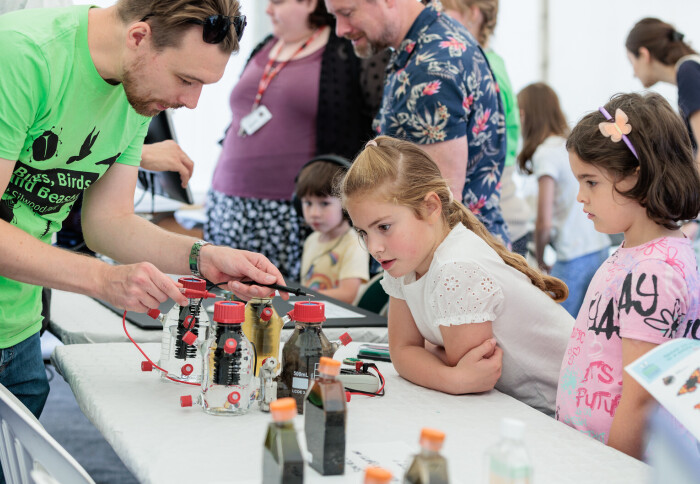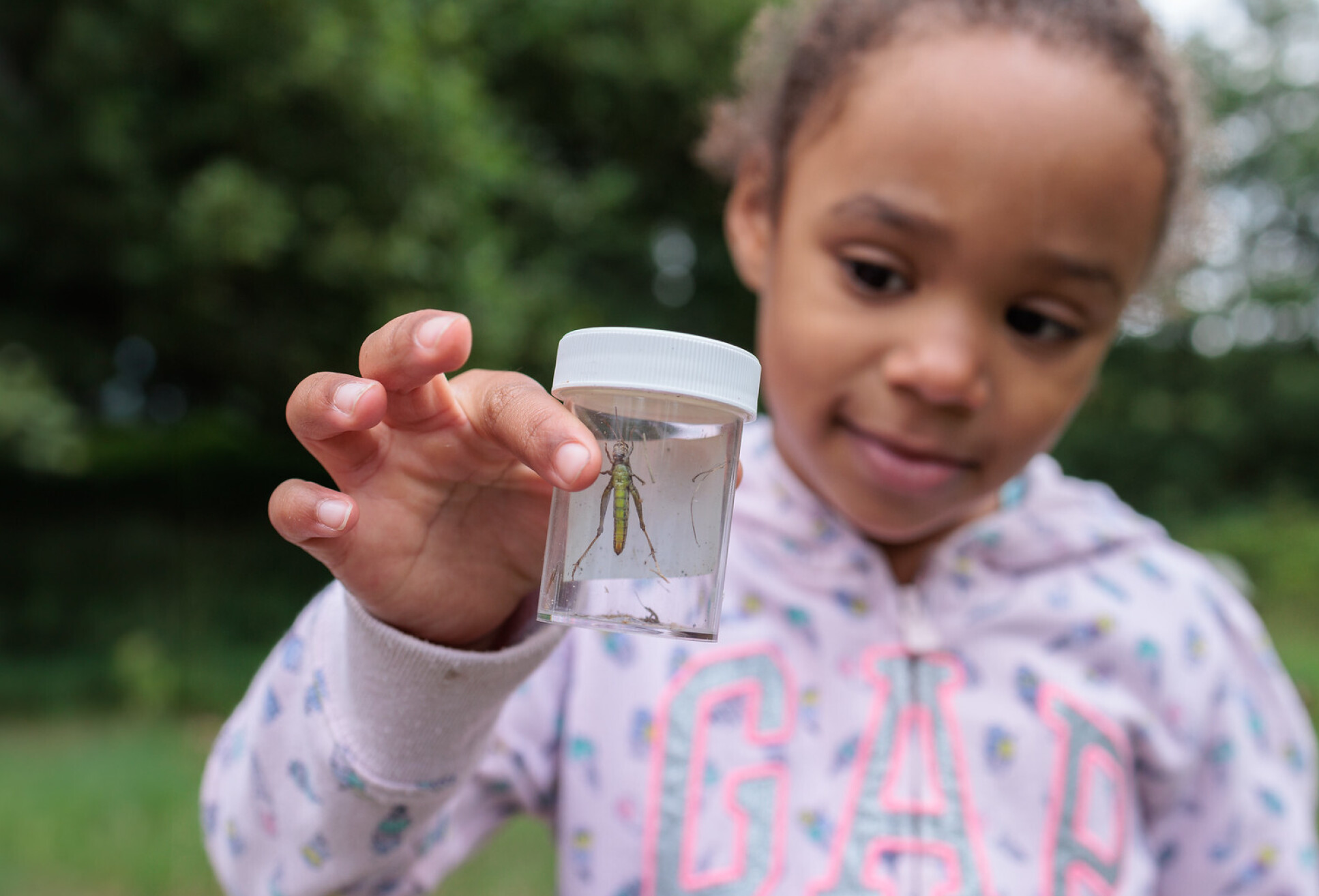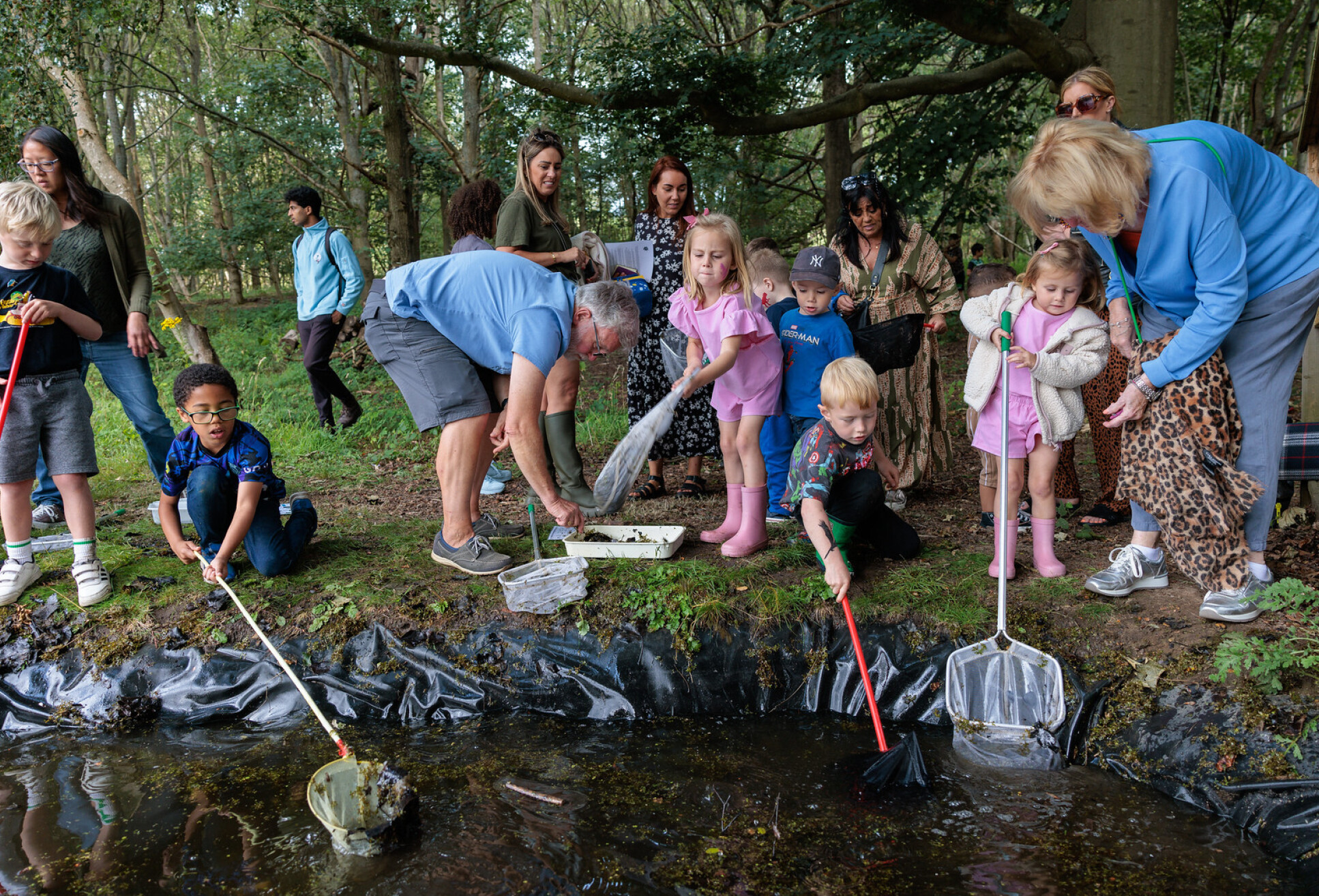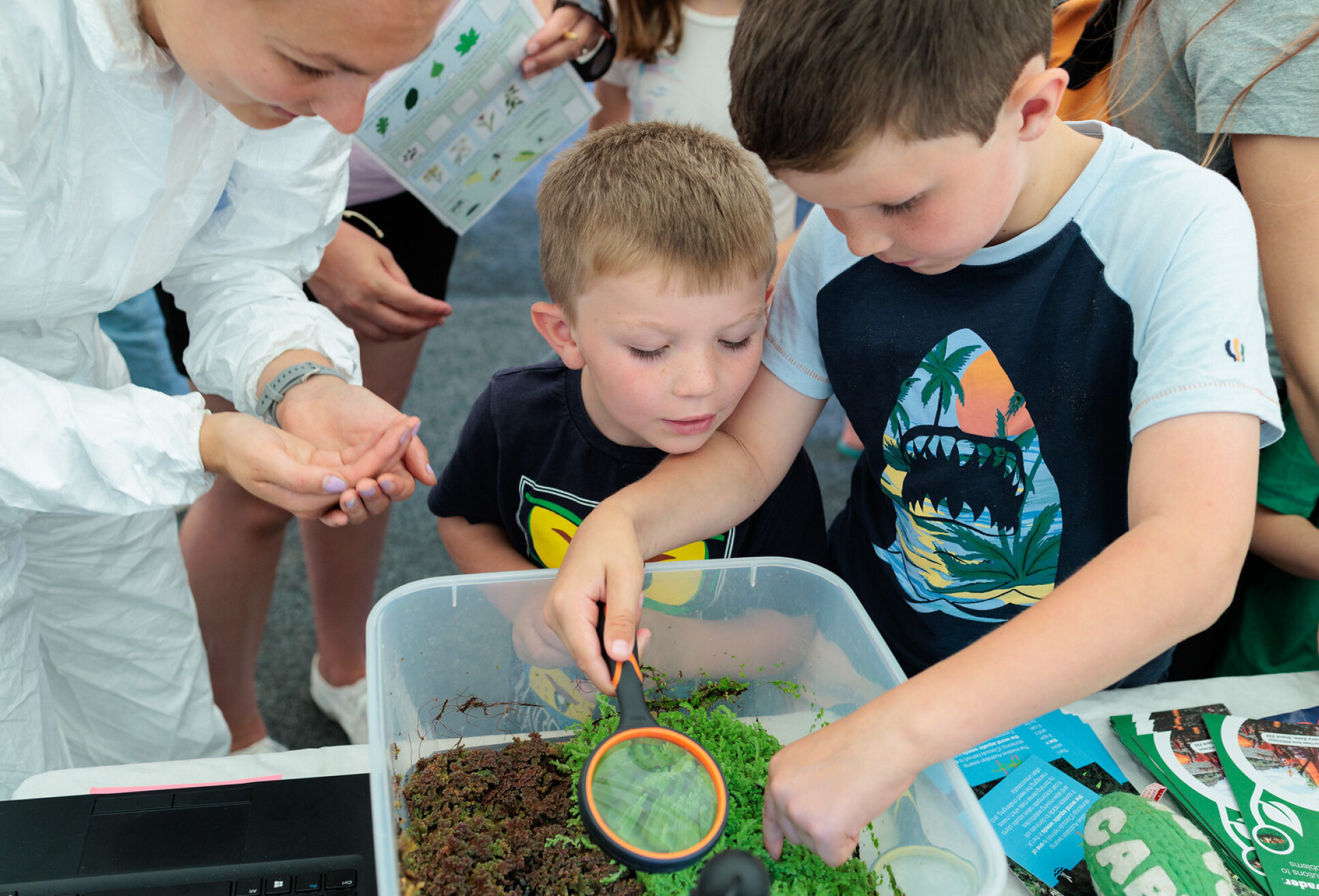Bugs, Birds & Beasts Day inspires once again at Silwood Park
by Emily Govan

The annual Bugs, Birds and Beasts Day returned to Imperial’s Silwood Park campus on 25 July and it was another resounding success.
Silwood Park is Imperial’s world-renowned international centre for research and teaching in ecology, evolution, and conservation. For Bugs, Birds and Beasts Day, the campus opened up to the general public to enjoy a free day out of volunteer-supervised activities including falconry displays, watching live bird eggs develop and hatch, pond dipping and discovering wonderful facts about the creatures all around us on bug hunts.
"Every year, Silwood Park hosts this exhilarating outreach event, with a special focus on inspiring the next generation to care deeply about nature and our environment." Professor Vincent Savolainen Director, Georgina Mace Centre
The outreach event is organised by the team from Imperial’s Georgina Mace Centre for the Living Planet and aims to encourage and inspire budding scientists through a variety of engaging activities and information stands that bring the weird and wonderful world of bugs, birds and beasts to life.

Professor Vincent Savolainen, Director of the Georgina Mace Centre, said: ‘Every year, Silwood Park hosts this exhilarating outreach event, with a special focus on inspiring the next generation to care deeply about nature and our environment. Whether you enjoy a captivating falconry display or prefer learning about the fascinating bugs that inhabit our ponds, we anticipate the enthusiastic participation of hundreds of people in this science-filled extravaganza.’
Discover Mammals
This stall was built by part of the team that won the annual University Mammal Challenge. It featured all the mammals that can be found in Silwood Park, showing that cool mammals can be found all around us! Kids got to see and sniff different mammal poo from around Silwood, showing them the difference between a rabbit and fox poo for instance. There were physical specimens of voles, shrews, deer antlers etc observe them up close. Kids played a game with night vision cameras and camera trap photos, where they had to identify the different mammals in the photos. And there was a game about matching different footprints to the mammal that made them.
"From deer antlers, to fox poop and rodents preserved in alcohol, our stall was a small curiosity cabinet! We hope the kids will keep this experience throughout their lives." Max Khoo and Sinan Gurlek MSc students
Max Khoo and Sinan Gurlek, MSc EEC students, said: ‘Our stall focused on the mammals of Silwood Park, and we are blessed to have so many species calling our campus home. From deer antlers, to fox poop, and to rodents preserved in alcohol, our stall was a small curiosity cabinet. We aimed to gain the kids’ attention and spark their interest. We hope they will keep this throughout their lives.’
Animal Masks
Dr Will Pearse and team developed a stall to engage children with climate change and how species are adapted to their environment for years. With the Animal Masks stall, children were able to make their own mask to pretend to be a creature living somewhere on Earth.
Dr Pearse said: ‘The stall lets us help them understand how species are adapted to the natural world, and how they'll either have to move or evolve to keep up with climate change. We also teach them a magic trick that lets them know where any animal in the world lives just by looking at their ears! (Big ears lose heat quickly, which is useful in a desert, while small ears help trap it in, which is useful where it's cold.)'
Day in the life of a field biologist
The field biologist stall, ran by PhD student Chloe Coxshall invited visitors to take on the puzzle of matching up images of different primates with corresponding descriptions. They then had to work out which essential items they would take to different fieldwork locations in the rucksack challenge.
Chloe said: ‘My stall is to do with fieldwork and I’m focusing it on monkeys. I want to encourage kids to be interested in fieldwork and get outside! It’s all about learning about the conditions we work in outside, different locations, going abroad.’
Building links with the local community and beyond
Bugs, Birds & Beasts Day has always been popular with the local community, with many families taking the opportunity to connect with the campus. And in recent times the event has expanded to include visitors from across London and beyond.
Visitor Shaun, who had brought his grandson along with him, said: ‘My grandson is crazy about bugs and things in the garden – this event has absolutely everything for him. He can see how big they are, what they are, how they live. It’s perfect for him!’

Article text (excluding photos or graphics) © Imperial College London.
Photos and graphics subject to third party copyright used with permission or © Imperial College London.
Reporter
Emily Govan
Department of Life Sciences